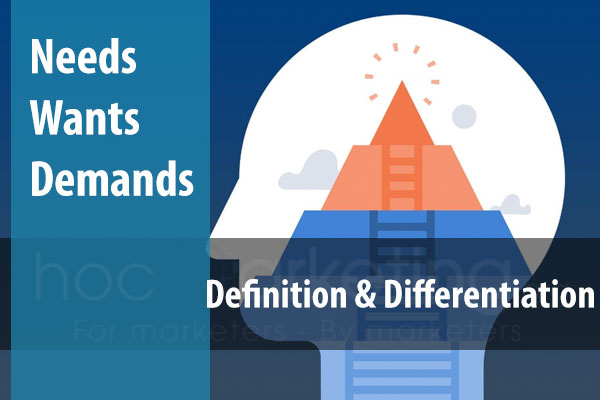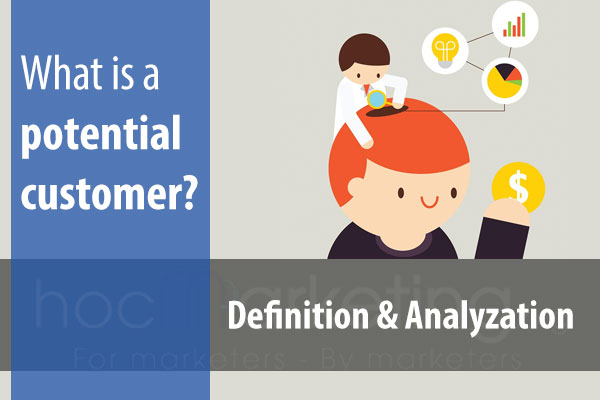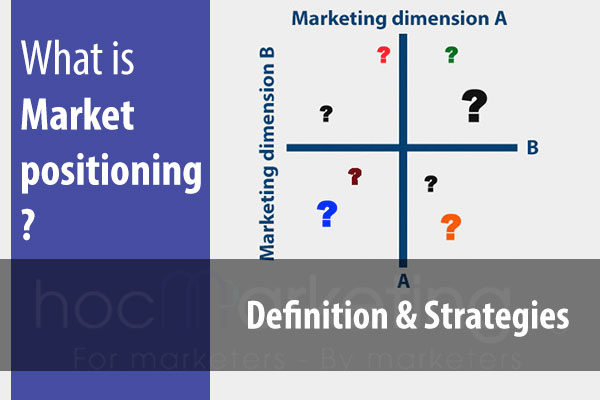
What is Microenvironment? Actors and Examples

What is a Microenvironment? How many actors are there in a Microenvironment? What are they? Examples of actors in a micro-environment.
A microenvironment is a part of a company's marketing environment, which consists of actors close to the company that affect its ability to engage and serve its customers as well as its marketing performance. This blog post will discuss some aspects of the importance and consequences of this term on a common business.
Definition of microenvironment
A microenvironment is a part of a company's marketing environment, which consists of actors close to the company that affect its ability to engage and serve its customers as well as its marketing performance.
Actors in a microenvironment
There are 6 actors existing in a microenvironment. They are: the company (itself), suppliers, marketing intermediaries, customer markets, competitors, and publics.
The micoenvironment
1. The company (itself)
The company (itself) is the first actor which affects its marketing ability. For example, the company's financial welfare will affect how much it can spend on researching, production, promotion... In addition, the company's human resources may affect its performance of its departments.
In drafting marketing plans, marketing management takes other company groups into account—groups such as top management, finance, research and development (R&D), purchasing, operations, human resources, and accounting. All of these interrelated groups form the internal environment. Top management sets the company’s mission, objectives, broad strategies, and policies. Marketing managers make decisions within these broader strategies and plans. With marketing taking the lead, all departments—from manufacturing and finance to legal and human resources—share the responsibility for understanding customer needs and creating customer value.
2. Suppliers
Since a long time ago, suppliers have been considered as partners to the company in creating and delivering customer value. Of course, they are seen as a factor in the company's microenvironment.
Suppliers form an important link in the company’s overall customer value delivery network. They provide the resources needed by the company to produce its goods and services. Any problems occured with suppliers can dramatically affect marketing. In addition, supply availability and costs should be monitored by the company in order to maintain the production stability. Supply shortages or delays, natural disasters, and other events can cost sales in the short run and damage customer satisfaction in the long run. Increasing supply costs may force price increases that can harm the company’s sales volume.
For example, Morrison’s, one of the United Kingdom’s leading supermarkets, sells a large number of items, including seafood, dairy products, meat, bakery goods, and non-food grocery products. It acknowledges that the various awards it has achieved over the years— including “Supermarket of the Year,” “Nations’ Best Café,” and “Most Sustainable Retailer of the Year”— could not have been achieved without good relations with its suppliers. Its endeavor to maintain good relationships with suppliers shows in many ways. For instance, Morrison’s premium brand of milk costs 10 pence per liter more than the Morrison’s standard price, and according to Martyn Jones, the corporate services director of the organization, the supermarket uses this to support the dairy farmers who supply the milk. Morrison’s also encourages farmers to complete the Grocery Code Adjudicator’s annual supplier survey, through which the relationship could be developed further. In fact, the close relationship between Morrison’s and its suppliers has also culminated in a different way; the organization hired its former supplier, Neil Davison of Express Dairies, to work for it.
c. Marketing intermediaries
Marketing intermediaries refer to individuals or organizations which help the company in production (production for lease), distribution (wholesalers, retailers, agents & brokers), promotion (advertising media companies), finance (banks, financial companies) and even marketing (marketing agencies). And of course, in the company's microenvironment, they are an actor.
Similar to suppliers, marketing intermediaries form an important component of the company’s overall value delivery network. Thus, today’s marketers recognize the importance of working with their intermediaries as partners rather than simply as channels through which they sell their products.
For example, Although Apple has hundreds of its own retail locations throughout the world, it also uses the services of authorized resellers who help the firm sell its products all over the world. In this arrangement, Apple’s products are sold at identical prices both in its stores and in those of authorized resellers. Apple considers these authorized resellers as partners and has recently overhauled its premium resellers’ partners program. The organization is co-funding the renovation of resellers’ stores to follow Apple’s own retail formula and make demo units display consistent with Apple’s specifications. Apart from those who sell its products, Apple also has another set of intermediaries called authorized service providers. These are companies or individuals who represent organizations in providing repair and maintenance services to its customers. These intermediaries could belong to either of two categories, depending on the scale of the services that could be handled: authorized service providers or limited service providers. Apple gives its partners reimbursements for labor, travel, and parts, where applicable. It also gives them comprehensive access to products, upgrade information, service, troubleshooting, on-the-spot technical support for certified technicians, etc. In addition, the partners benefit from inclusion in the Apple resource locator system, whereby they are displayed on Apple’s website for customers looking for nearby service providers.
3. Customers
Customers are not only visibly the targets of the company's marketing activities, but also the most important actor in its microenvironment. Customers can affect its marketing activites. For example, the company needs to research characteristics (demographic, psychographic, behaviorism...) of target customers in a country in case it plans to expand its coverage to this country.
4. Competitors
Competitors are a factor which both positively and negatively affect the company's marketing ability. On a hand, competitors motivate the company to work hard for better competitive advantages. On the other hand, this factor can harm the company's sales and profits.
The marketing concept states that, to be successful, a company must provide greater customer value and satisfaction than its competitors do. Thus, marketers must do more than simply adapt to the needs of target consumers. They also must gain strategic advantage by positioning their offerings strongly against competitors’ offerings in the minds of consumers.
No single competitive marketing strategy is best for all companies. Each firm should consider its own size and industry position compared with those of its competitors. Large firms with dominant positions in an industry can use certain strategies that smaller firms cannot afford. But being large is not enough. There are winning strategies for large firms, but there are also losing ones. And small firms can develop strategies that give them better rates of return than large firms enjoy.
5. Publics
The company’s marketing environment also includes various publics. A public is any group that has an actual or potential interest in or impact on an organization’s ability to achieve its objectives. We can identify seven types of publics:
- Financial publics: This group can affect the company’s ability to obtain funds. Banks, investment analysts, and stockholders are the major financial publics.
- Media publics: Nowadays, communication can be seen as the strongest weapon in every area of a society. Media publics possess this weapon because they take control of communication. This group brings news, features, editorial opinions, and other content to audiences through television stations, newspapers, magazines, and blogs and other social media. Sometimes, media publics can help promote the company's image. However, media publics can also bring down a "big brand".
- Government publics: Government publics are those who working on laws, bills, legislations, taxes, quotas... which can affect the company's marketing ability. Management must take government developments into account. For example, Marketers must often consult the company’s lawyers on issues of product safety, truth in advertising, and other matters.
- Citizen-action publics: A company’s marketing decisions may be questioned by consumer organizations, environmental groups, minority groups, and others. Its public relations department can help it stay in touch with consumer and citizen groups.
- Internal publics: Internal public involves those who work for the company, such as workers, managers, volunteers, and the board of directors. Their feelings, attitudes, perceptions can affect the company's marketing ability. Different companies use different methods to motivate their internal publics. When these groups feel good about the companies they work for, this positive attitude spills over to the external publics.
- General public: A company needs to be concerned about the general public’s attitude toward its products and activities. The public’s image of the company affects its buying behavior.
- Local publics: This group includes local community residents and organizations. Large companies usually work to become responsible members of the local communities in which they operate.
A company can prepare marketing plans for these major publics as well as for its customer markets. Suppose the company wants a specific response from a particular public, such as goodwill, favorable word of mouth and social sharing, or donations of time or money. The company would have to design an offer to this public that is attractive enough to produce the desired response.
Conclusion
Microenvironment in Marketing is a factor that can help or harm the company’s sales and profits. The marketing concept states that, to be successful, a company must provide greater customer value and satisfaction than its competitors do. Thus, marketers must do more than simply adapt to the needs of target consumers. They also must gain strategic advantage by positioning their offerings strongly against competitors’ offerings in the minds of consumers. No single competitive marketing strategy is best for all companies. Each firm should consider its own size and industry position compared with those of its competitors. Large firms with dominant positions in an industry can use certain strategies that smaller firms cannot afford but being large is not enough there are winning strategies for large firms but there are also losing ones for small firms so that these strategies should be selected based on the company size and industry position.




















